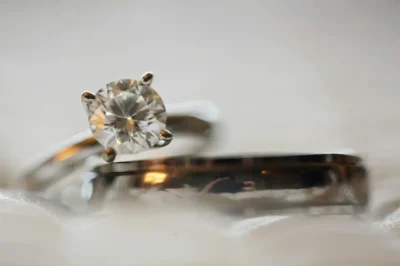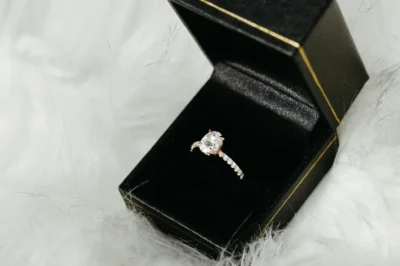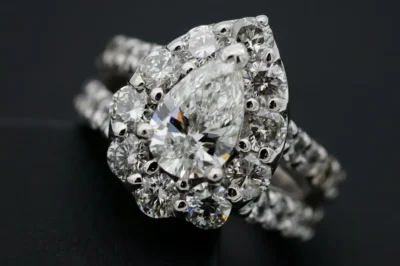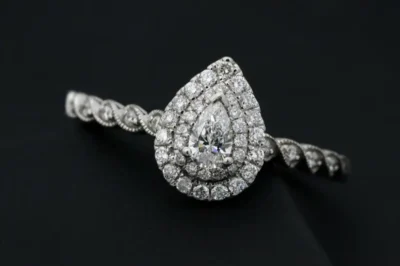If you’ve ever considered buying a diamond—or investing in one—you already know that understanding the market is everything. Diamond prices fluctuate, and while diamonds are often seen as timeless, their value is influenced by a complex mix of supply, demand, technology, and consumer preferences.
With 2026 around the corner, savvy buyers and investors are asking: What will diamond prices look like next year? Will natural diamonds continue their traditional upward trajectory? Or will lab-grown diamonds continue to disrupt the market?
In this article, we’ll break down the most comprehensive diamond price trends for 2026. From global market insights to buying tips, you’ll get everything you need to make smart choices.
Current State of the Diamond Market (2025 Recap)
Before predicting the future, it’s important to understand the present. The diamond market in 2025 has been anything but static, shaped by consumer preferences, geopolitical influences, and technological innovation.
Natural Diamonds vs Lab-Grown Diamonds
Natural diamonds remain the gold standard for investment and luxury. In 2025, they continued to command high prices for high-quality stones, particularly in popular colors and larger carats. However, lab-grown diamonds have been steadily gaining traction due to their affordability and ethical appeal.
Lab-grown diamonds are typically priced 20–40% lower than natural ones, making them increasingly attractive to millennials and Gen Z buyers. Yet, from an investment perspective, natural diamonds still hold the edge due to rarity and historical price appreciation.
Geographic Market Insights
Diamond markets differ dramatically around the world:
- United States: Continued strong demand for engagement rings and luxury jewelry. Price sensitivity is increasing as consumers weigh cost against ethical sourcing.
- China: Growth in middle-class luxury buyers keeps demand high, especially for medium-to-high quality natural diamonds.
- India: Driven by both cultural celebrations and investments, smaller diamonds remain very popular.
- Europe: Buyers are increasingly value-conscious, with a growing interest in lab-grown diamonds for sustainability reasons.
Understanding these regional differences is crucial for predicting 2026 trends, as demand and pricing vary significantly across markets.
Key Factors Influencing Diamond Prices in 2026
Several critical factors will shape diamond price trends in 2026, from economic conditions to consumer behavior.
Market Demand Fluctuations
The global demand for diamonds continues to evolve. Engagement rings, fashion jewelry, and investment stones all play a role. High-quality diamonds in popular cuts and sizes (especially 1–2 carat) are likely to see sustained demand, keeping prices stable or even rising slightly.
Supply Chain Disruptions
Diamond mining and distribution have faced challenges in recent years, from logistical issues to geopolitical tensions. Any disruption—such as reduced output from major mines—can lead to price spikes. Conversely, improved mining efficiency or new discoveries could moderate price growth.
Currency Exchange Rates and Inflation
Diamonds are globally traded in U.S. dollars, making currency fluctuations a significant factor. In countries where local currency weakens against the dollar, diamond prices may rise, while strong currencies can make imports more affordable. Inflation and economic uncertainty also affect buying behavior, influencing short-term price movements.
Investment and Speculation Trends
Diamonds are increasingly seen as an alternative investment. High-net-worth individuals and collectors often drive demand for rare stones. Speculative buying can inflate prices in the short term, particularly for exceptional colors (like fancy vivid pinks or blues) or flawless clarity stones.
Technological Innovations
Lab-grown diamonds continue to improve in quality and size. Innovations in grading and certification also enhance market transparency, giving buyers more confidence and potentially affecting pricing for both natural and lab-grown stones.
High-tech jewelry apps and AI-driven pricing tools are also helping consumers make better buying decisions, increasing price transparency and potentially stabilizing markets.
Consumer Behavior and Jewelry Trends
Sustainability and ethical sourcing are influencing buying habits. Consumers are increasingly considering the environmental impact of their purchase, which may push demand for lab-grown diamonds and ethically sourced natural diamonds.
Additionally, trends in fashion jewelry, like colored diamonds and mixed metal settings, can influence which diamonds retain higher value. For example, demand for smaller but higher-color diamonds may rise as fashion shifts toward delicate designs.
Diamond Price Predictions for 2026
Now, let’s get into the exciting part: what diamond price trends can we expect in 2026?
Short-Term vs Long-Term Forecasts
- Short-term: Expect modest price increases for high-quality natural diamonds. Market conditions are relatively stable, but minor fluctuations are likely due to supply chain variables.
- Long-term: Natural diamonds remain a strong investment, especially for rare colors and flawless stones. Lab-grown diamonds may continue to increase in affordability, narrowing the price gap for consumer purchases.
Expected Trends for Natural Diamonds
High-demand stones (particularly 1–2 carat diamonds with good color and clarity) are likely to see stable or slightly rising prices. Rare stones like fancy-colored diamonds may experience significant appreciation due to limited supply and collector demand.
Expected Trends for Lab-Grown Diamonds
Lab-grown diamonds will continue their steady growth, both in availability and consumer acceptance. Prices may continue to decline slightly due to technological improvements and competitive production, making them more accessible for everyday jewelry.
By Diamond Type and Size
Color and Clarity:
- D–F color diamonds (colorless) will retain premium pricing.
- Flawless and internally flawless diamonds remain top investment picks.
Carat Weight:
- 1–2 carats: most popular and stable prices.
- 3 carats and above: strong investment potential but higher market volatility.
Regional Price Outlook
- United States: Slight increases in high-quality natural diamonds. Lab-grown diamonds continue gaining market share.
- China: Stable natural diamond prices with gradual growth in lab-grown diamond adoption.
- India: Affordable, smaller stones dominate; natural diamond prices remain moderate.
- Europe: Sustainability concerns drive lab-grown adoption; natural diamond prices stable or slowly rising.
Tips for Buyers and Investors in 2026
Whether you’re buying a diamond for love or investment, these strategies can help you make smart choices.
Natural Diamond Buying Strategies
- Prioritize Quality: Focus on cut, color, clarity, and carat—the classic 4 Cs.
- Timing Matters: Watch for seasonal promotions or market dips.
- Buy from Reputable Sources: Trusted jewelers and certified stones (GIA, IGI) reduce risks.
Lab-Grown Diamond Considerations
- Know Your Stone: Lab-grown diamonds are chemically identical to natural ones, but resale value is different.
- Sustainability Appeal: Lab-grown diamonds appeal to environmentally conscious buyers.
- Quality Over Size: Focus on well-cut stones to maximize sparkle and visual impact.
Challenges and Risks in the Diamond Market
While diamonds are beautiful and valuable, there are risks to consider:
- Market Volatility: Global economic uncertainty can affect prices.
- Synthetic Diamond Growth: Lab-grown diamonds may impact natural diamond prices, particularly in consumer jewelry markets.
- Ethical and Environmental Concerns: Buyers increasingly scrutinize mining practices, affecting demand and pricing.

Conclusion
The diamond market in 2026 will be shaped by a mix of tradition and innovation. Natural diamonds continue to offer investment value, especially rare and high-quality stones. Lab-grown diamonds are changing the buying landscape, providing sustainable, affordable alternatives for consumers.
By understanding diamond price trends, monitoring global markets, and selecting quality stones, buyers and investors can make informed decisions. Whether for love, fashion, or investment, diamonds remain one of the most fascinating—and potentially rewarding—luxury assets.






